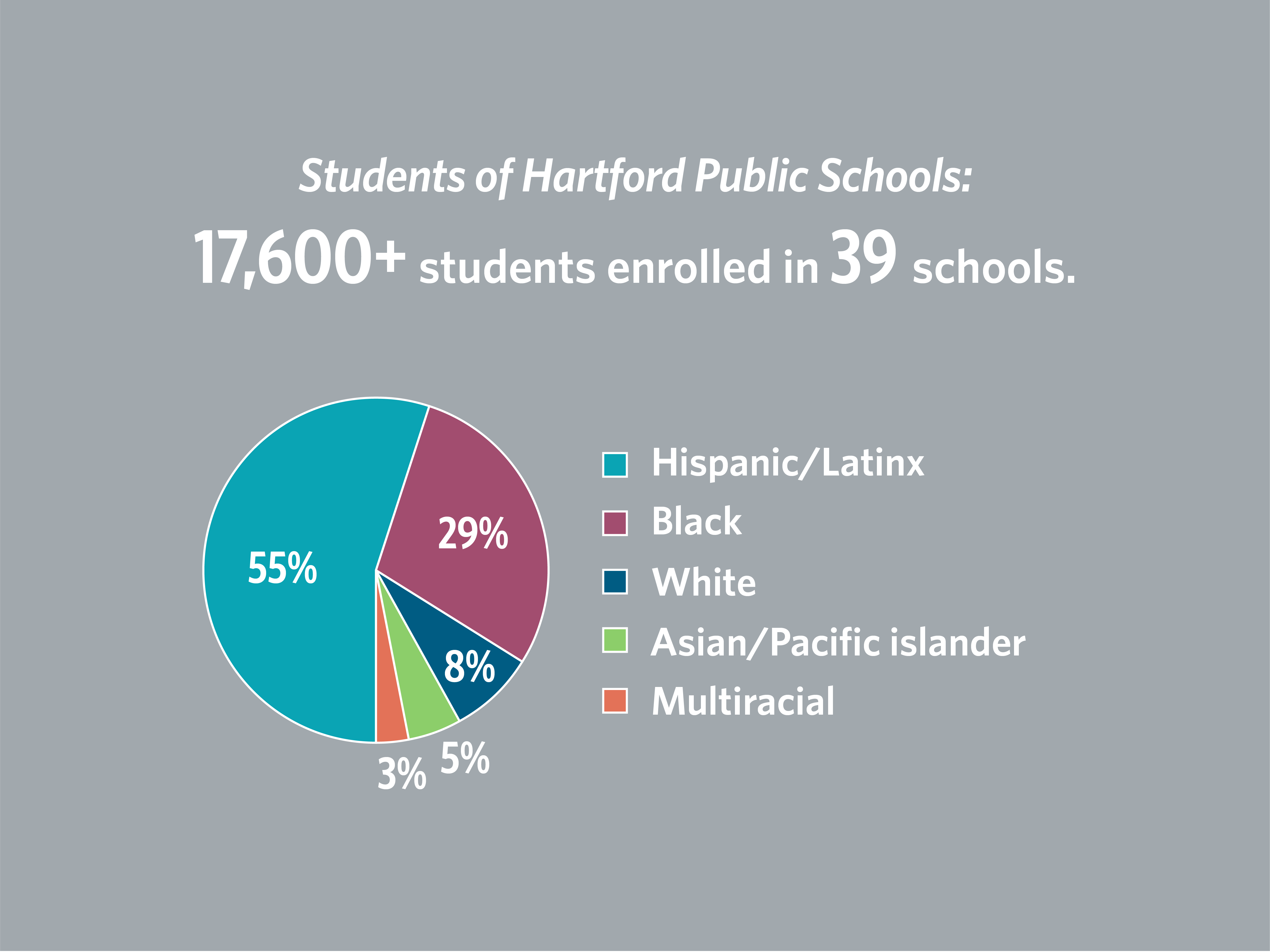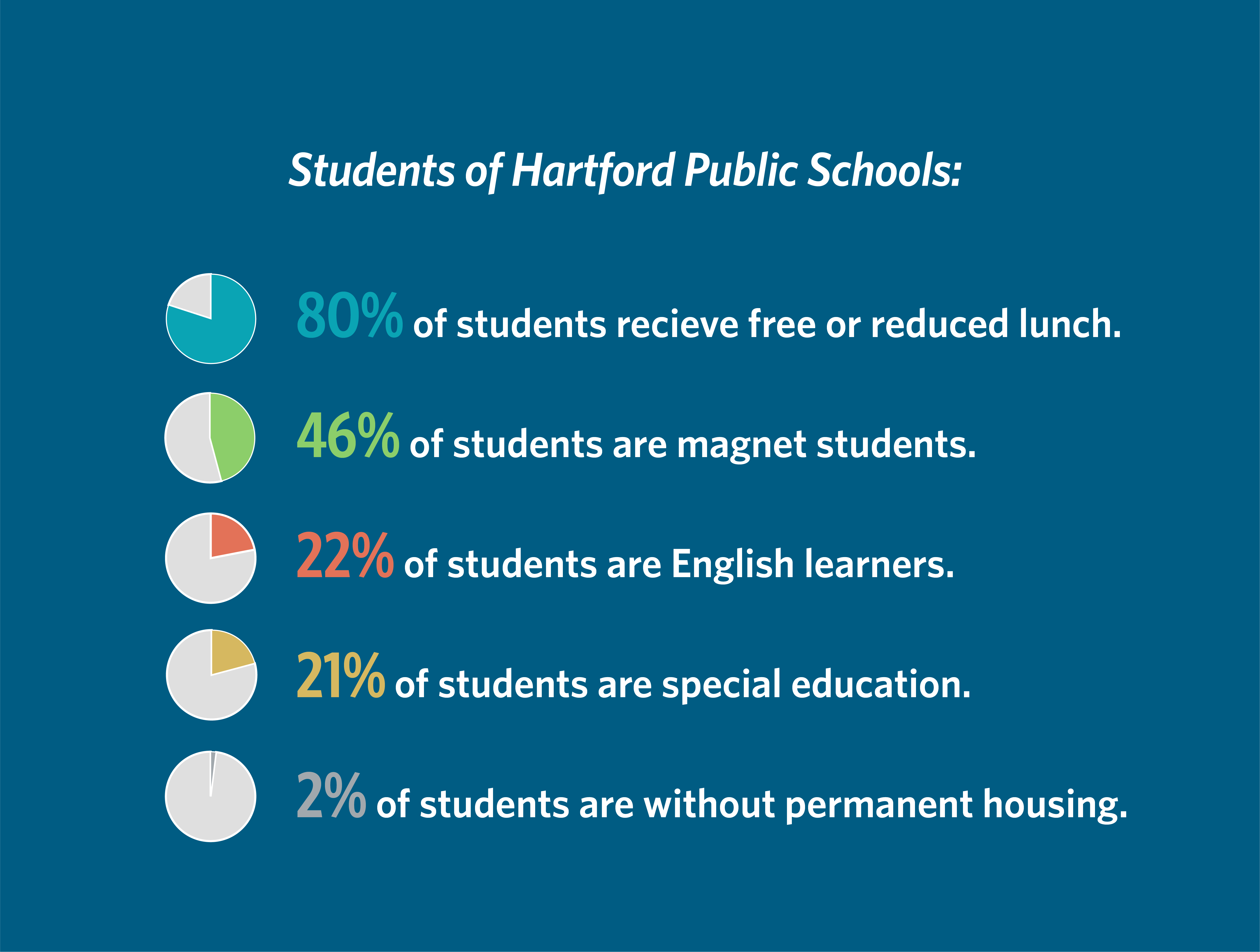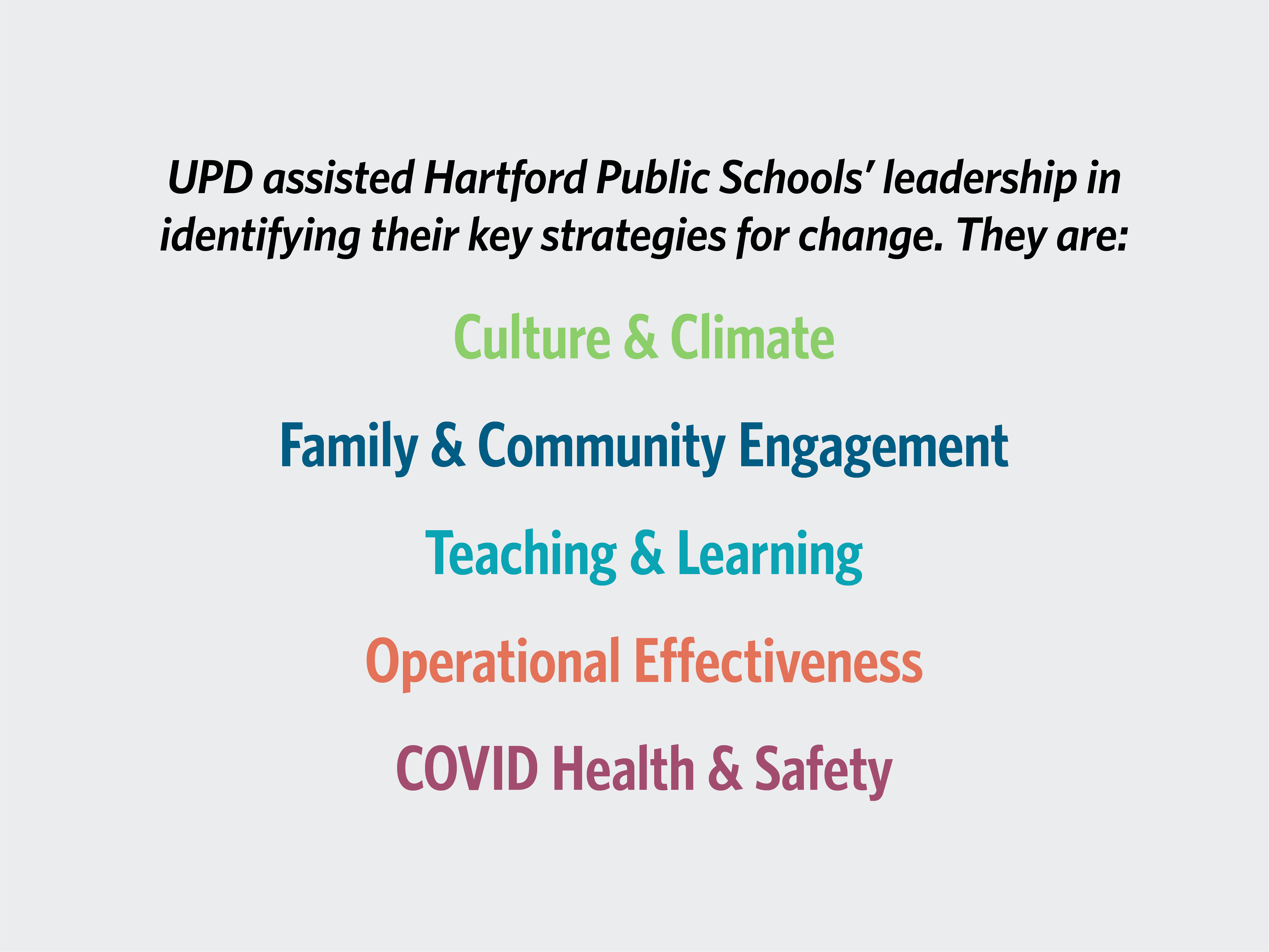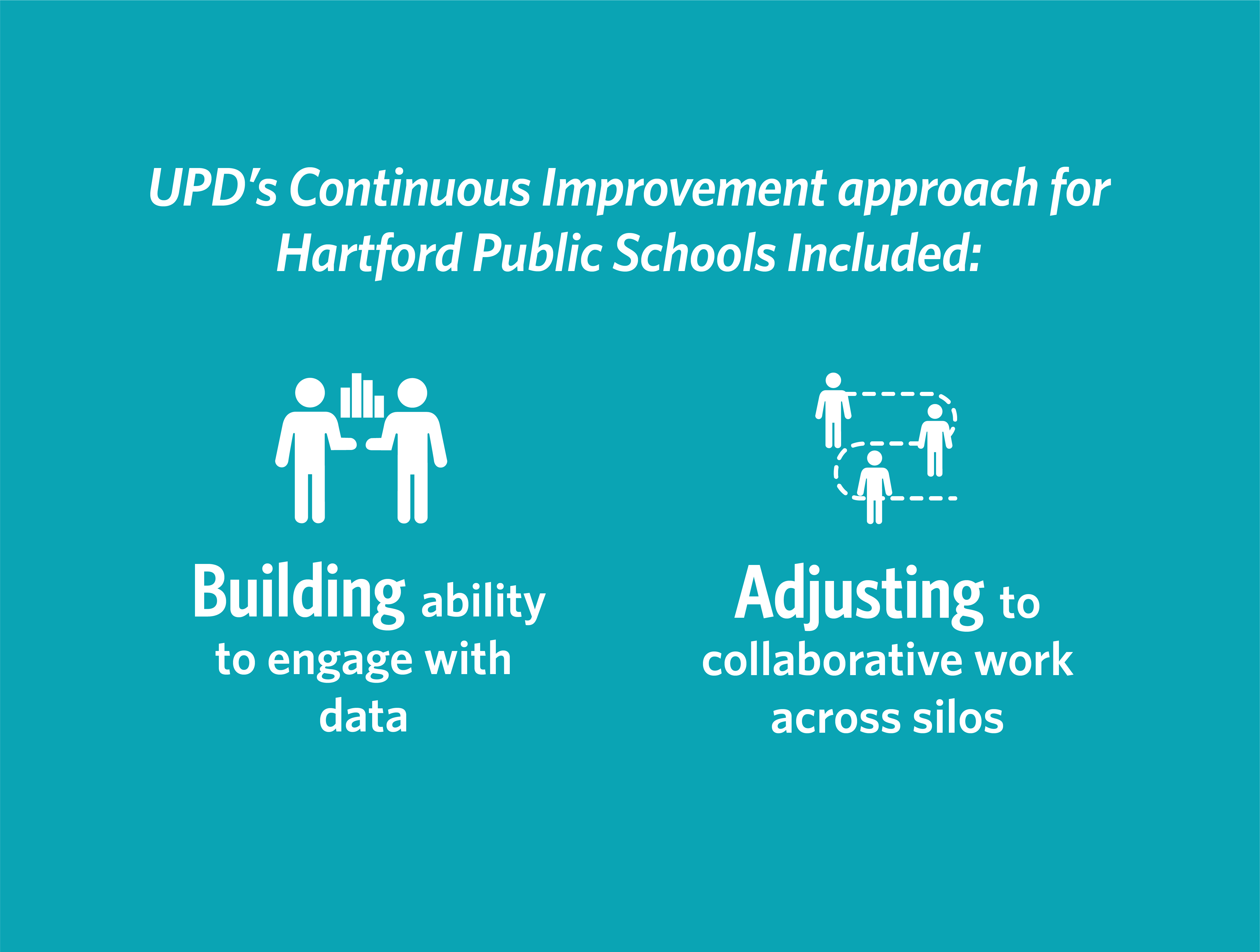Establishing Systems for Continuous Improvement.
PARTNER: Hartford Public Schools
SERVICE AREA: Continuous Improvement
LOCATION: Connecticut
TIMEFRAME: 2020 – 2021
The Challenge
The newly-assembled leadership cabinet at HPS had begun working on a district-wide strategic plan just when the COVID-19 pandemic turned everything on its head in spring 2020. In this new, fast-changing, and uncertain environment, the district leadership needed to regroup and ensure they were working cross-functionally to focus efforts on the most critical priorities, related to and outside of the pandemic context.
The Solution
HPS brought UPD in to help their new leadership team plan for and manage implementation of their strategic priorities while navigating the challenges of COVID.
STRATEGY PRIORITIZATION, MAPPING AND ACTION PLANNING
UPD assisted HPS leadership in identifying their key strategies for change, and within those key strategies we mapped out the initiatives most likely to help them achieve their goals. This six-week facilitation process included individual meetings with cabinet members and key stakeholders, and three intensive whole-group cabinet working sessions.
After this foundation was in place, we helped individual cabinet members and the teams working on each strategy to build action plans, clarify goals, and identify implementation metrics for the initiatives related to each of the strategies. The Continuous Improvement meetings were a collaborative work environment where everyone could see how the work was progressing.
BUILDING A CONTINUOUS IMPROVEMENT CYCLE
Many of the cabinet members were in new roles of leadership, and a large part of UPD’s work was building their ability to engage with data and helping them adjust to collaborative work across silos. Our Continuous Improvement process was ideal for this purpose because of its structured and iterative nature, where everyone could build aligned leadership and teamwork habits while implementing their initiatives, support their collective goals, and simultaneously make adjustments to improve their work based on real-time data.
The HPS Continuous Improvement Process
The weekly cabinet Continuous Improvement meetings followed a similar agenda. Each week, the Continuous Improvement meeting focused on a rotating strategic priority led by the cabinet member in charge. UPD assisted the cabinet members in identifying their meeting objectives, preparing to facilitate the meetings, and coached them on how to analyze and use the data relevant to their strategy. The meetings also facilitated cross-cabinet (and cross-organizational) awareness and collaboration, and promoted the sharing of resources.
For example, if the current weeks’ meeting was on attendance, the cabinet member in charge would have the hour to lead a discussion about what the data shows around the changing state of attendance, what new improvements or problems have popped up, and what team members could do to help them achieve their goals around attendance.
The Impact
INFRASTRUCTURE
With UPD’s support, HPS leadership established foundational Continuous Improvement data practices and facilitation routines that serve as an anchor for their ongoing management routines. In addition, the process enabled HPS administrators to identify data “holes” and areas for growth, and to create stronger systems for data collection and analysis.
LEADERSHIP
District leadership invested in collaboration and problem-solving capacity across the organization, developing alignment across priorities as well as actions. Overall, as a result of our work together, cabinet members were better equipped to think strategically, collectively problem-solve, and ensure their decisions led to the desired outcomes across the priority areas of work.



